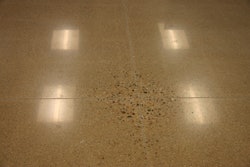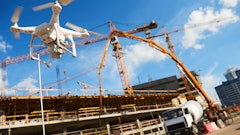
Concrete curing is the process of maintaining adequate moisture in concrete within a proper temperature range in order to aid cement hydration at early stages. This process is incredibly delicate, and if handled improperly, the structural integrity and strength of dried concrete is severely compromised.
However, it is impossible to expect someone to be present during the entire three-week-or-longer curing process to measure moisture levels and temperature. This is why it’s imperative to have the right tools for the job to monitor the process in real-time, 24/7. The right tool for this job is a data logger with wireless data transmission capabilities.
In order to understand the need for data loggers, we have to understand the curing process and the factors that can disturb it. Concrete temperature, air temperature and the concrete’s dimensions have a significant influence over the hydration process. For concrete to maintain its shape and texture, these parameters must be carefully measured over time. Even small deviations from the recommended measurement guidelines can take concrete from sturdy and smooth and turn it into a cracked mess that becomes a safety hazard and liability to all.
Effect of Heat on Concrete Curing
Concrete curing conducted during hot days can speed up the process, which will lead to decreased strength over time. This is counteracted by adding water when temperatures rise. Additionally, the larger a concrete structure, the more heat it will generate. And as the cement is mixed with water, heat becomes trapped in the mixture and the core continues to heat while the outside cools. Keeping track of the temperature level vs. the water added is key to ensuring concrete falls within the American Concrete Institute’s guideline for 70% compressive strength.
How Cold Impacts Concrete Curing
Cold weather can also prove detrimental to the curing process. Concrete can experience as much as a 50% strength reduction due to freezing. This can be counteracted by using live steam, embedded heating coils, heating pads or concrete blankets. But, in order to determine the need for these strengthening agents, construction professionals need to be able to measure internal and external temperatures.
Using Data Loggers for Concrete Curing
The purpose of a wireless data logger is to take the human element out of the temperature measurement process. Oftentimes, temperature is measured manually and on a set schedule. If the user forgets to measure the temperature or is tied up with other work, then the user loses that interval of measurement. If the concrete fell out of the specified temperature range during those times, it may be compromised and nobody would know.
Data loggers can be placed on the outside of the concrete to measure air temperature, as well as have their sensors inserted into the drying concrete to measure core temperature. The logger can then be set up to send alerts to multiple users whenever temperatures fall-out of a designated range. Therefore, even if construction staff isn’t on-site, users can be alerted in real-time to take immediate action or call a colleague close by to add more water or use a strengthening agent.
Data loggers come in multiple configurations to best suit the needs of the user. Since most construction curing locations are placed outside of Wi-Fi zones, there are data loggers equipped with Bluetooth to send data to smart devices seamlessly. By having this feature, companies remove the risk of losing their data as a result of inconsistent or nonexistent Wi-Fi. There are also mobile base stations available to connect with cellular device services at even longer ranges. Devices with these capabilities can be obtained at prices that pale in significance to that of the overall project.
When companies install data loggers during the concrete curing process, they gain the benefit of cost savings, operational efficiency and having a clear record of temperatures for quality assurance. Construction companies have everything to gain from choosing high-quality loggers and everything to lose from having incorrect measurements. Save your company the hassle and cure your concrete correctly from the start.



















